Trying to figure out what tack you need for your new horse can seem like a daunting task. From bits and bridles to boots and buckets, this complete tack guide will give you the basics – you’ll have everything you’ll need to properly outfit your new horse.
Table of Contents
Horse Tack Guide
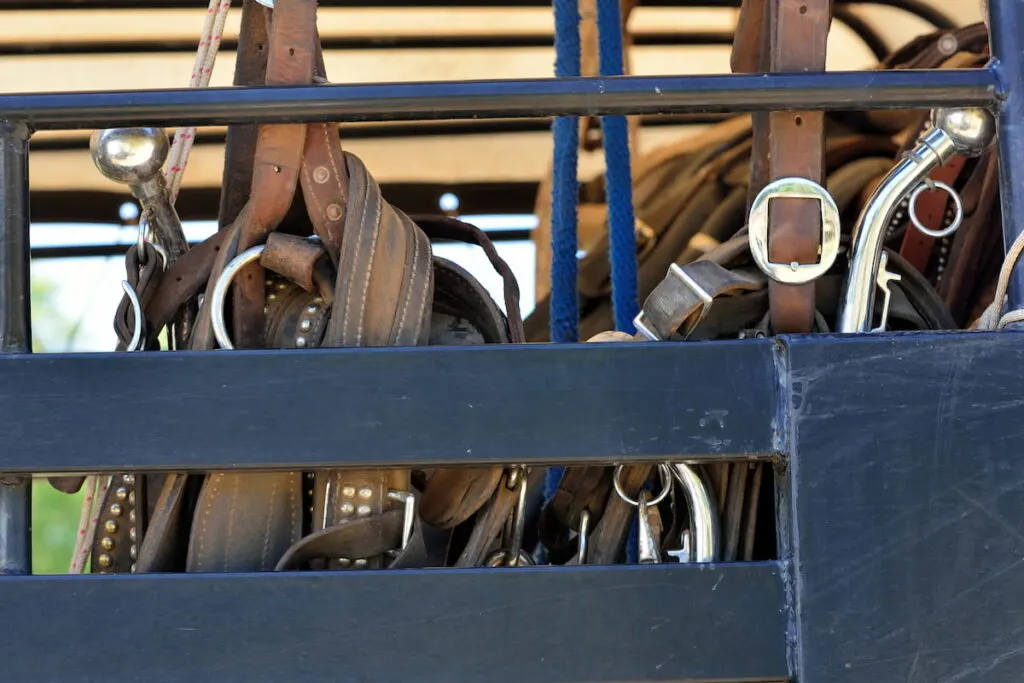
“Horse tack” usually refers to the equipment that you need to ride or drive your horse. However, horses usually need much more than just these things to stay happy and healthy. A saddle is useless if the horse is still dirty and unkempt underneath, and a horse performs his best when he’s well-kept.
Where to Buy Horse Tack?
You can find most everything you need for your horse at most horse supply retailers whether in-store or online. However, don’t feel pressured to buy everything fancy and new.
Plenty of equestrian tack can be found secondhand from private sellers or consignment shops. You can often save big on big-ticket items such as saddles or harnesses, but also small things like bits or clothing for shows.
Certain things should always be purchased new, such as first aid supplies. It’s also better to find new hay nets and buckets for sanitary reasons, but these things are usually inexpensive.
What Tack Will You Need?

Your individual tack needs will vary greatly depending on your horse, your discipline, and your preferences.
Whether you’re keeping your new horse at your home and doing all the work yourself, or you’re boarding at a full-service facility, your horse will need some gear.
Most of the time, you’ll want to add tack and accessories as you need them (rather than purchasing random things all at once).
However, there are some things that most riding horses will need, and you can experiment with different items as they suit your needs.
If you’re not sure how to use a piece of equipment or whether or not it’s the right choice for your horse, consult a professional trainer or veterinarian.
Some tack can be harmful to both horse and rider if used improperly, so do your research before you try it.
Basic Necessities
Even if you never plan to ride or drive your horse, they still likely need some basic equipment.
Halter
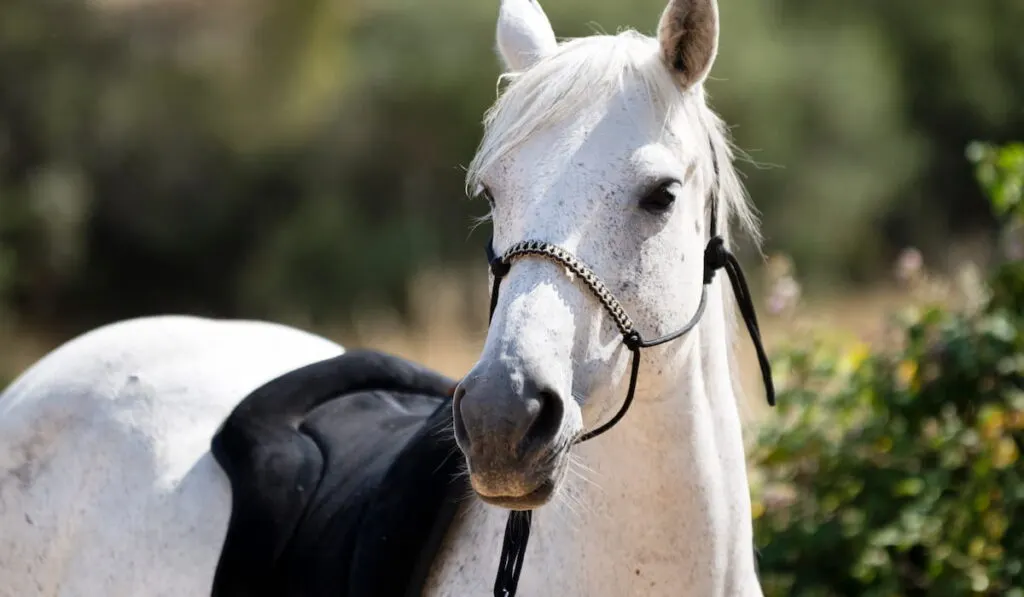
Halters allow you to control a horse’s head. They’re made of rope, leather, nylon, or some combination of the two. For a detailed guide on choosing the best halter for your horse, check out this post to choose the one that’s right for you and your horse.
Most new horses will come with their own halter from a previous owner, but it’s always best to have a few spares just in case.
Make sure your halter is the proper size for your horse, and that it’s in good condition. A broken halter during an emergency can be a disaster!
Lead Rope

Lead ropes come in tons of different colors and styles, but they are usually made of rope, leather, or a nylon blend with a metal clip on the end. Some lead ropes feature a length of chain, which can be helpful for managing a hard-to-handle horse.
Grooming Kit
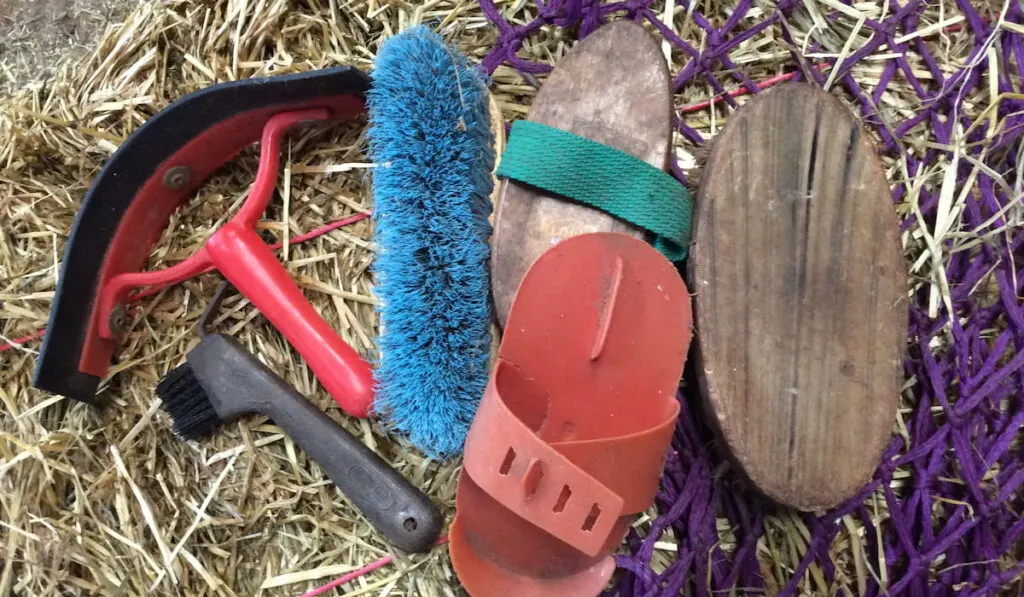
Keeping your horse well-groomed and clean is an essential part of keeping him healthy. Plus, grooming allows you to spend quality time with your horse, even if you don’t have time for a ride.
This can help increase your bond and help your horse earn your trust, as well as alert you to any potential health problems that need to be addressed.
Stock your grooming kit with these essentials:
- Curry comb for loosening dirt and hair
- Hard Brush/Dandy Brush
- Soft body brush
- Small soft face brush
- Hoof pick
- Wipes, saline wipes, and a soft cloth for delicate areas
- Elastic braid bands
- Spray bottle
- Fly spray
- Shedding blade/sweat scraper
- Show sheen/coat spray
- Detangler
- Shampoo/conditioner
- Hoof oil or hardener
- Bucket, sponge, towel
Riding Tack
If you plan on riding your horse, you’re going to need some riding tack. The specific pieces that you need will vary greatly depending on your discipline (and you can read all about that here), but here are some essentials:
Saddle
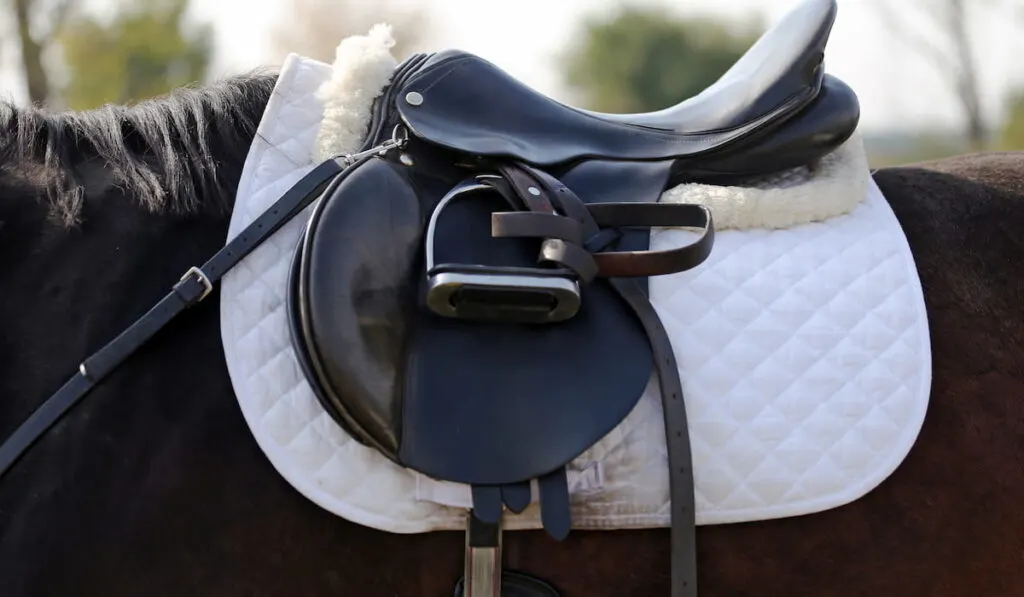
It’s generally wiser to purchase your saddle after you purchase your horse, and make sure that it fits properly. A visit from a professional saddle fitter can be the difference between night and day when it comes to your horse’s behavior when you ride.
There are many different types of saddles depending on the style of riding you choose:
- Western Saddle
- Australian Stock Saddle
- All-Purpose English Saddle
- Saddleseat or Cutback Saddle
- Dressage Saddle
- Jumping Saddle
- Bareback pad/saddle
Saddle Pad
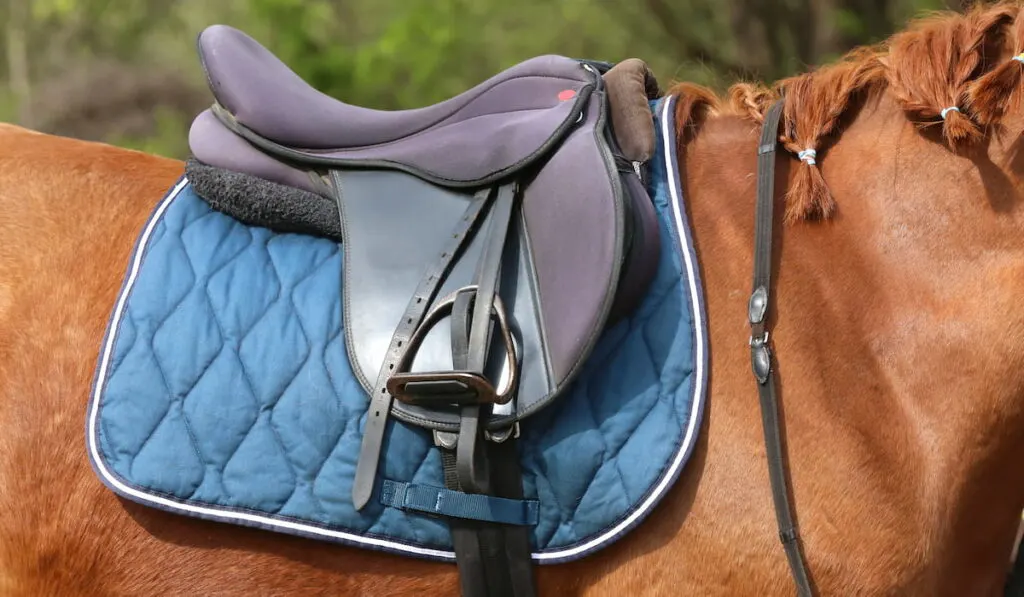
It’s best to pick up at least two of these, so you can have a fresh one to use while the other is in the wash. They vary in thickness and size, depending on your needs.
Dressage and Western saddle pads are large and rectangular, whereas hunter pads are usually fitted and trimmed with fleece. You can also add separate foam pads for extra cushioning.
Girth
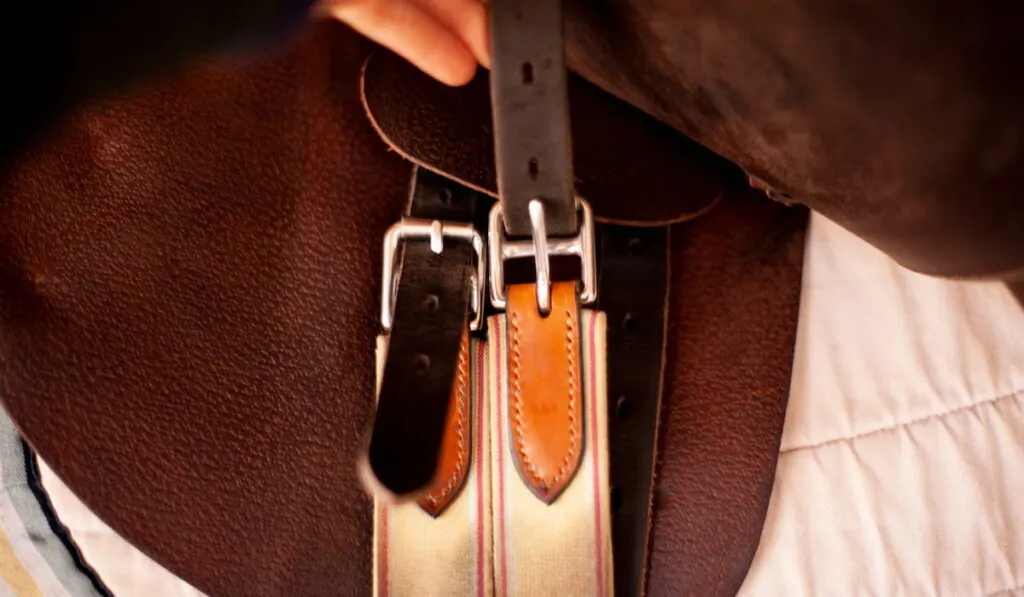
Ask the previous horse’s owners what size girth the horse is wearing. Some horses gain or lose weight fairly easily, and you may need a few girths to choose from.
They are made from various combinations of leather or nylon, and may be wrapped in fleece. Girth straps usually stretch over time, so always double-check your girth before mounting!
Stirrup Leathers and Irons
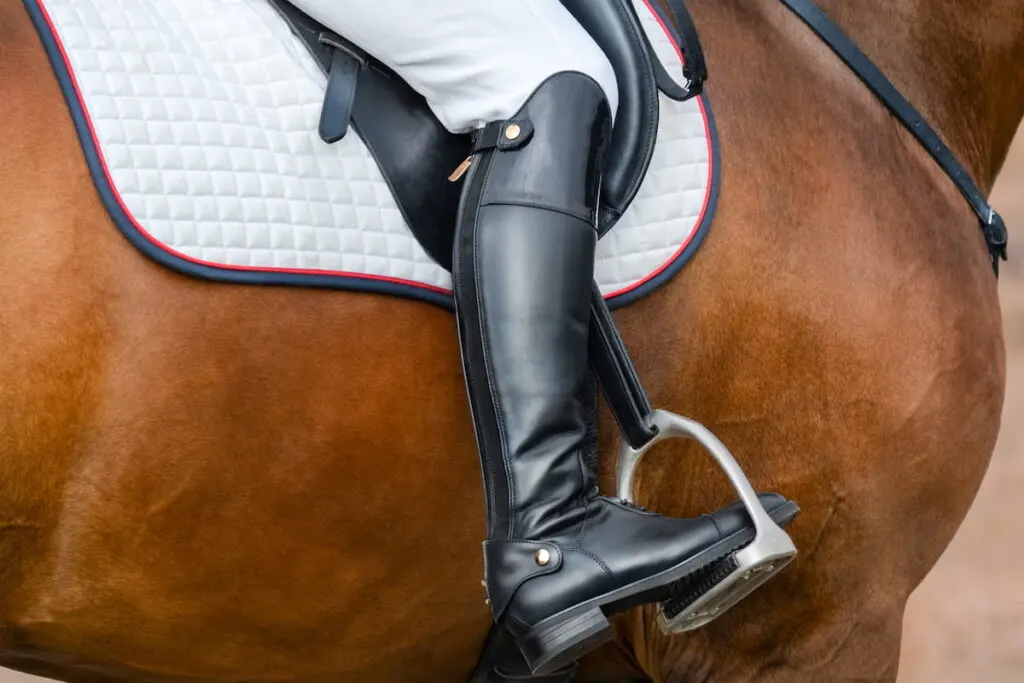
Stirrup leathers and irons come in a variety of styles and materials. Western stirrups are often wide and bell-shaped to allow your foot to easily slip in and out.
Some English stirrups have breakaway or open sides designed to give way in an emergency. For a basic saddle, standard leather stirrups and irons are usually just fine to start with.
Bridle
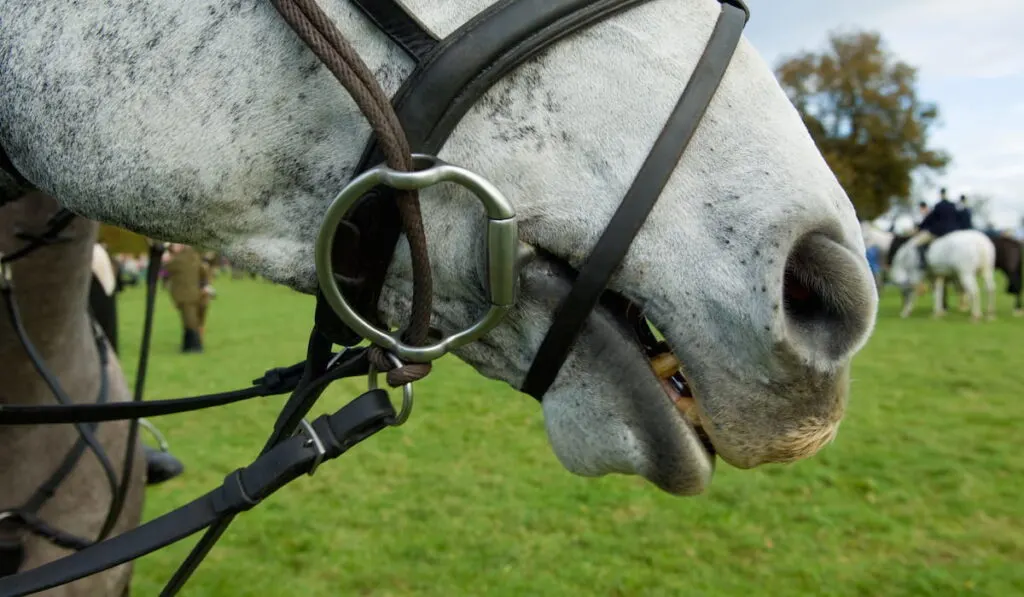
Bridles can vary in appearance and materials, depending on the discipline. English bridles usually have a cavesson noseband, and reins that attach to the bit. (source)
Western bridles often skip the noseband, and may be adorned with silver or other decorative elements. You can also purchase different accessories to modify your bridle if you need to (such as a flashy headband or various different nosepieces).
You can also try a bitless bridle or hackamore. These bridles don’t utilize a bit in the horse’s mouth for communication, but instead, put pressure on the horse’s head and nose.
Reins
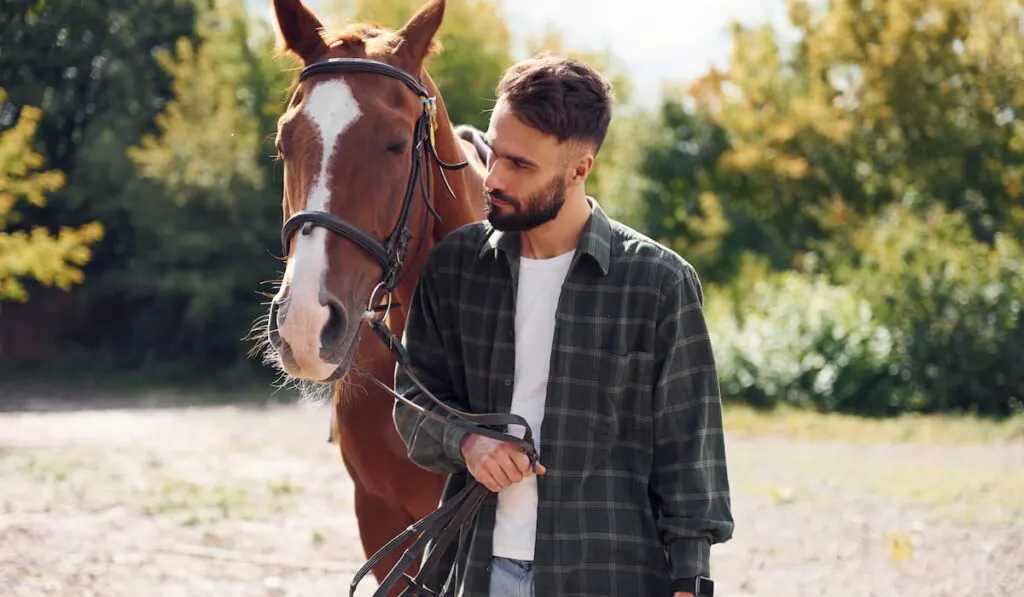
Reins are thin straps attached to the bit rings of a horse’s bridle. Riders use their reins to communicate with their horses with their hands.
English riders use two hands and operate each side independently (and may use two separate reins at the same time), but Western riders may use a single rein and “neck-rein” instead.
Bit
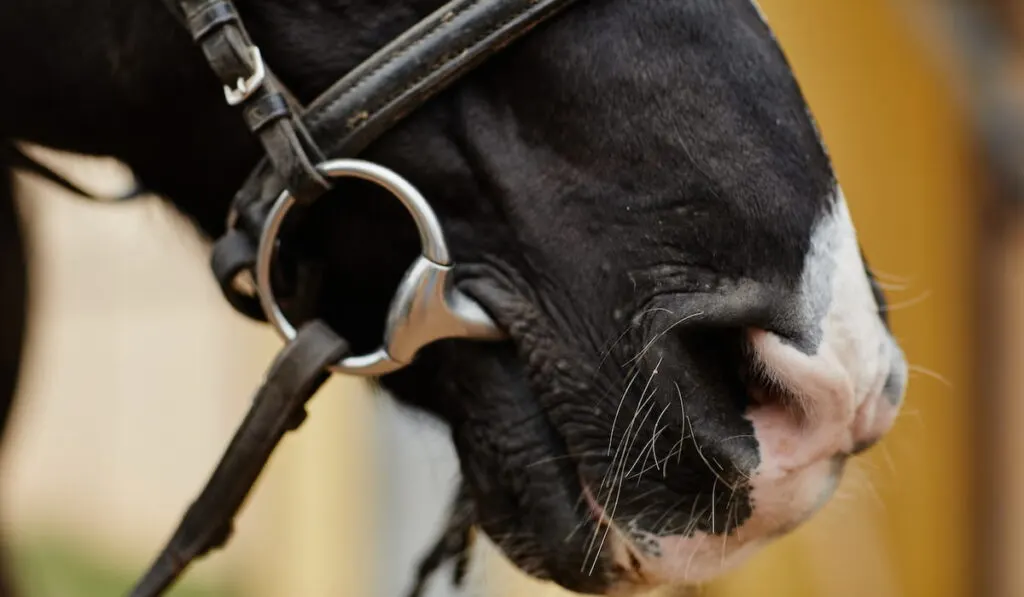
You may need to use some trial and error to find out which bit will work with your horse best. Consult the previous owner, or consider using softer bits and working your way up adding a bit with more pressure if necessary.
Standard categories of bits include snaffle, curb, Pelham, or double bridle. Different designs put pressure on a horse’s mouth in different ways, and bits that apply large amounts of pressure should be used cautiously.
Tack Cleaner
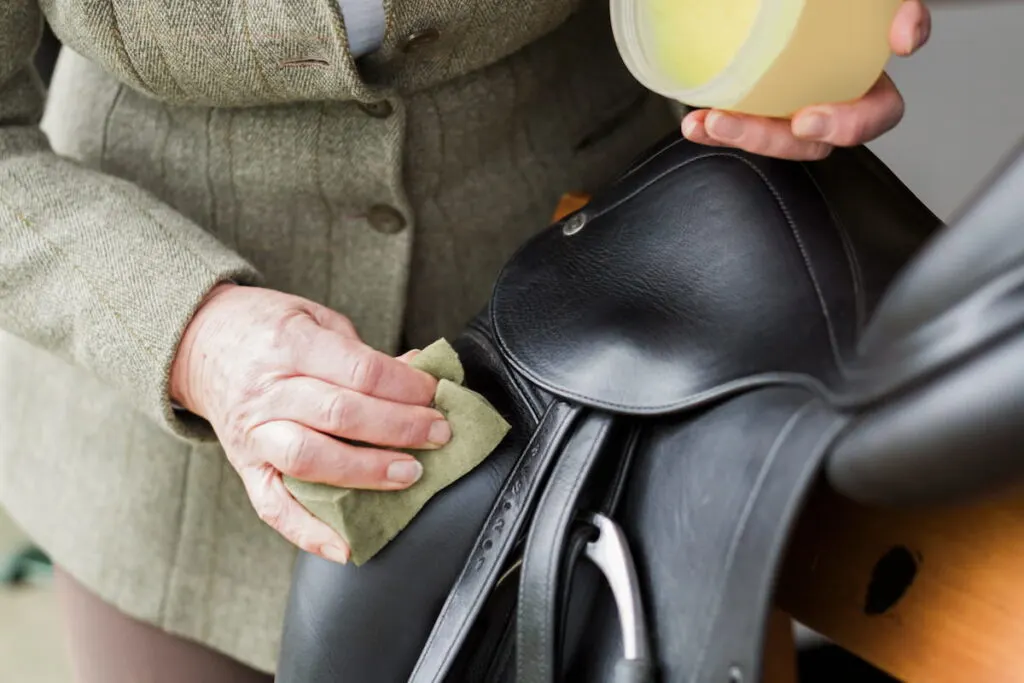
Don’t forget, your tack needs maintenance too if you want it to stay in tip-top shape. Leather saddles and bridles can be cleaned with standard leather cleaner.
A good saddle soap, some oil, and a clean cloth will keep your tack in great shape for years to come. And don’t forget to clean your bits, especially if your horse is prone to snacking while tacked up.
Blankets
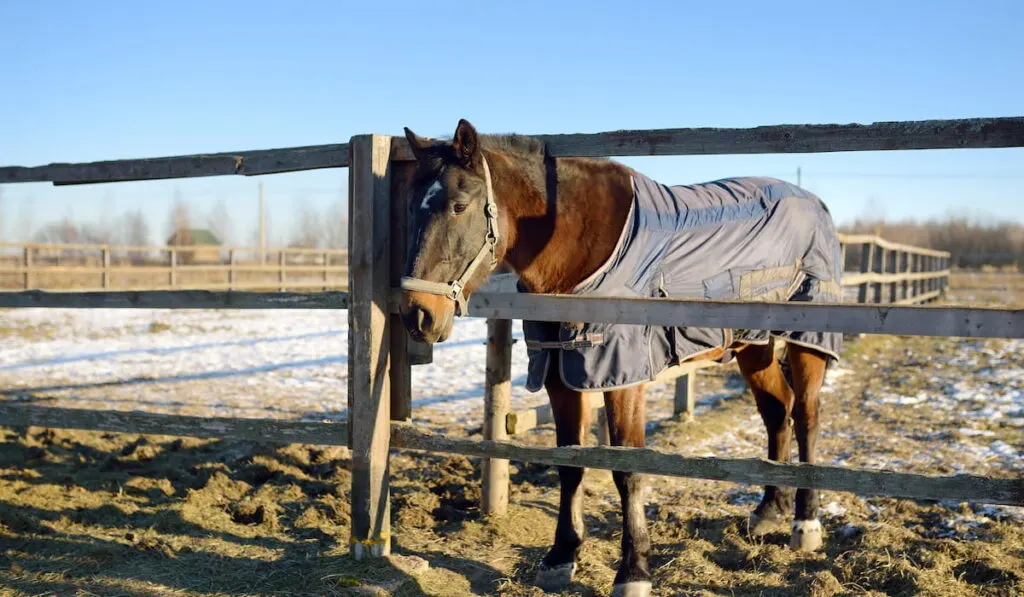
Your horse’s blanketing needs could vary, depending on the weather. Most horse owners like to have at least one blanket for protection from the elements in winter.
If you live in a place with drastic weather variations, and you plan on clipping or showing your horse, you’ll probably need some extra blankets.
- Rain sheet
- Light turnout sheet
- Heavy turnout blanket
- Cooler
- Stable blanket
- Fly sheet
Some equestrians don’t believe in using blankets at all – after all, wild horses do just fine without them. If you’re not sure of the best strategy for blanketing your horse, consult your veterinarian or other professional for guidance.
Extra Tack
Not all horses will require these items, but you may want to give them a try.
Riding Tack
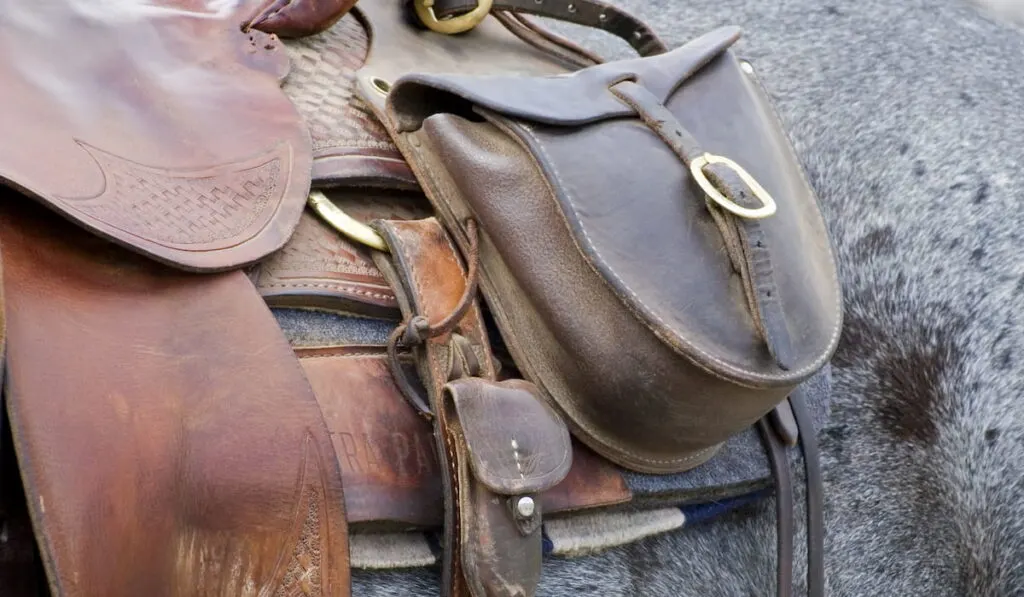
- Martingale. There are many different kinds, but martingales prevent a horse from lifting his head too far up while riding. They also may keep the reins in place in the event of a fall.
- Surcingle. These straps fit over the horse’s girth and can be used for training, especially for groundwork or lunging, or for driving.
- Crupper. Straps fit under a horse’s tail and prevent the saddle from slipping forward. Handy for eventing or trail riding.
- Breastplate or breastcollar. These fit around a horse’s shoulders and prevent the saddle from slipping backward, or slipping off entirely in the event of a girth or billet break. They are often used in jumping or Western riding.
- Saddlebags. If you plan to hit the trail, saddlebags can help you pack all your belongings safely and comfortably.
- Harness. If you plan to drive your horse, you’ll need a fully fitted harness and other accessories.
Rider Accessories
While you can check out this post to figure out what to wear, you may want to pick up some riding accessories.
You may want to try gloves, spurs, whips or crops, half-chaps, or full chaps, depending on your needs. And don’t forget the helmet!
Boots or Polo Wraps
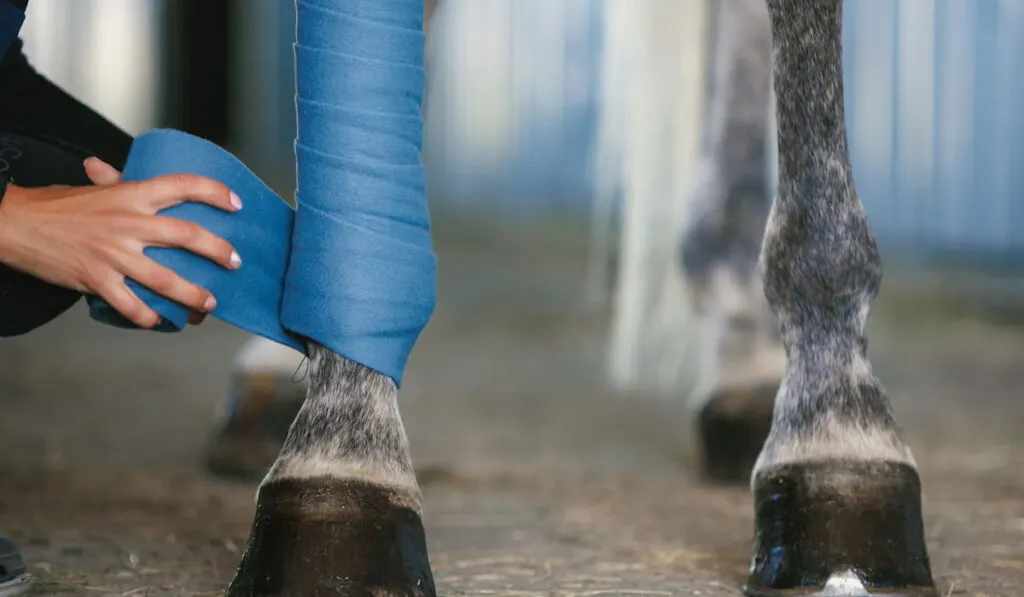
Depending on your discipline and the movement of your horse, you may need boots to protect their feet and legs. Bell boots, splint boots, fly boots, and polo wraps are common forms of leg protection.
Show Tack
If you decide to compete, you may need special equipment for shows. These items can be decorative or extra-fancy, so you’ll likely want to keep them out of the practice ring and safely secured somewhere clean and temperature-controlled.
Stable Supplies
While a pitchfork isn’t generally considered “tack,” it’s still a vital piece of horse equipment that you’ll definitely need.
Depending on where you’re keeping your horse, you may need to purchase and maintain your own stable supplies. If this is the case, here are the basics:
- Hay net (pick up extras)
- Several buckets (Water, Feed, Muck, First Aid)
- Pitchfork
- Shovel
- Wheelbarrow
- Stiff Broom
- Secure feed container and scoops
First Aid Kit
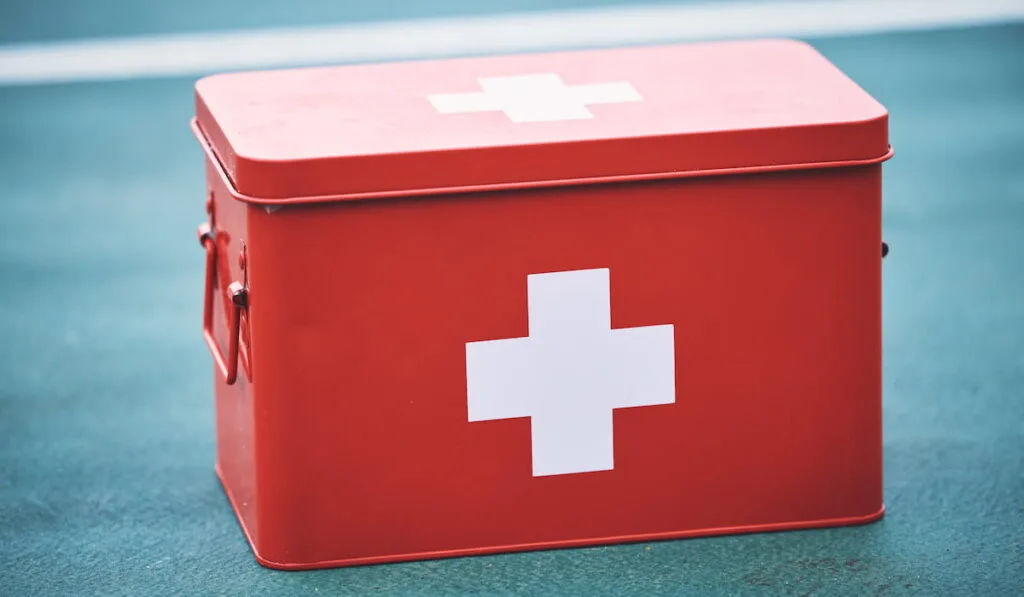
Safety first! Horses have an unusual talent for getting themselves into scrapes and other medical predicaments. Consider using a sturdy tackle box or another portable vessel that you can grab in an emergency. You’ll probably add to your first aid kit as you go along, but here’s a good list to start:
- Thermometer
- Petroleum jelly/Vaseline
- Flashlight and spare batteries for nighttime emergencies
- Gloves
- Duct tape
- Scissors
- Tweezers
- Ice pack
- Clean bucket
- Towel
- Twitch
- Chain shank, lead rope
- Extra halter
- Syringes (small and large)
- Antiseptic scrub
- Antiseptic wound cream
- Alcohol swabs
- Gauze bandages
- Self-sticking bandages (Vetrap)
- Gauze rolls
- Sheet cotton
- Cast padding
- Pillow wraps
- Veterinarian contact information and quick reference vet records
Extras: Wire cutters (if you have wire fencing), stethoscope, pocket knife, saline solution, antibacterial eye ointment, diapers (useful for wrapping a foot).
Consult your veterinarian, but having several medications on hand can also be handy in an emergency: bute or Banamine (pain relievers), Dormosedan gel (sedative), electrolyte paste. (source)
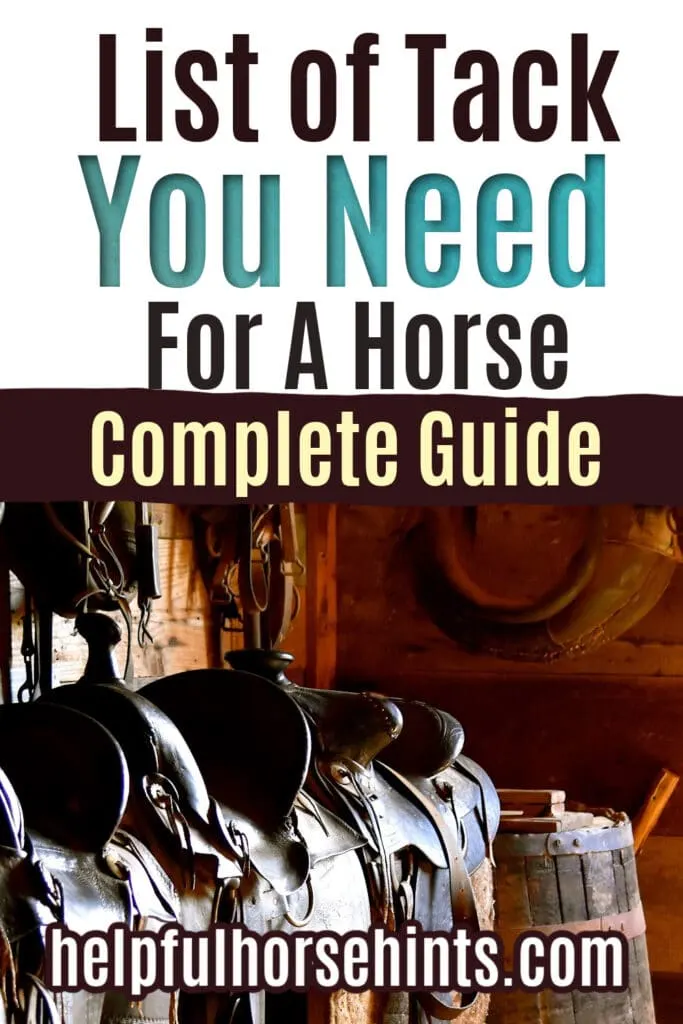
Name Tags and Labels
Want to know one of the most important but often overlooked pieces of equipment? Name tags and nameplates. If your tack and supplies are all labeled with your name or your horse’s name, they’ll be a lot easier to find (especially after a hectic show).
You can make custom nametags for bridles by using the tag machine at your local pet store. Tack shops often make engraved plates for halters or saddles as well.
Some barns use fancy color-coded systems or monogrammed fabrics, but a discrete label written in permanent marker can be just as effective for keeping track of your tack.
Happy Tack Shopping!
Even if you just pick up the basics for your horse, hopefully this complete tack guide gave you a better idea what you’ll need for your new horse. And don’t forget, horses love toys and treats too!

